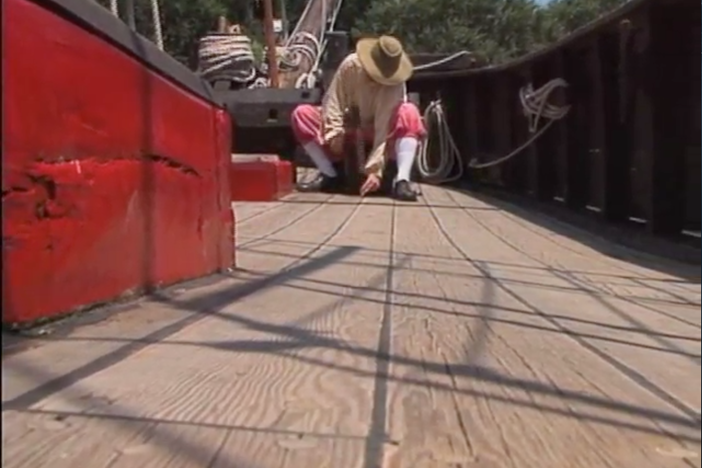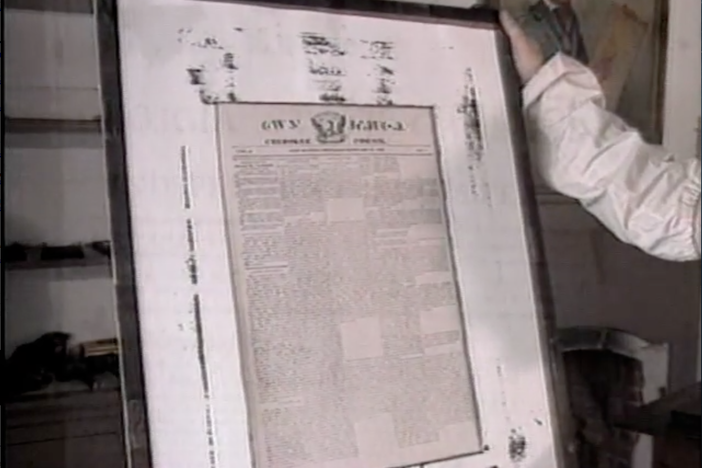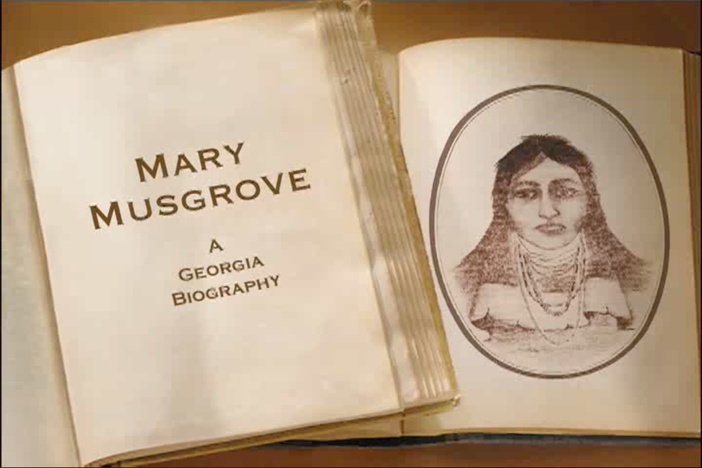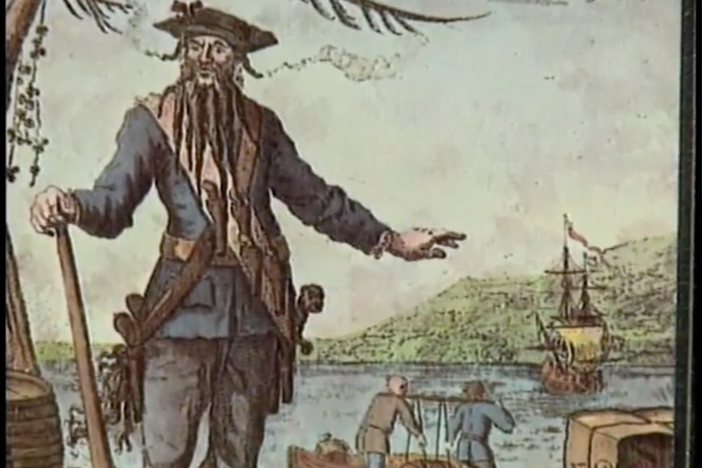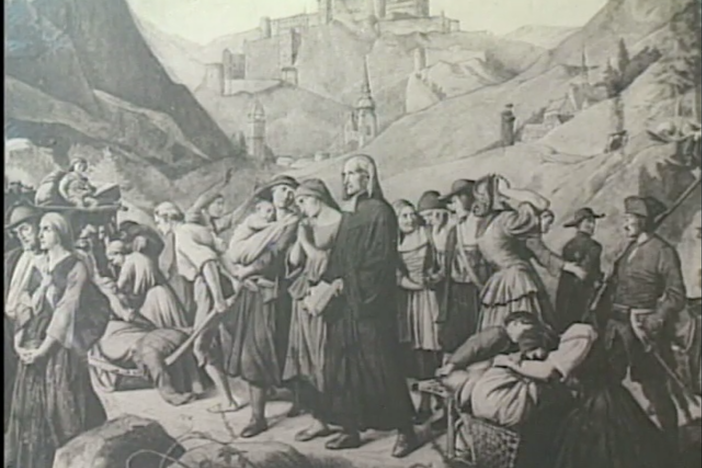Georgia International Trade: Naval Stores
Kirk Johnston, a Charles Town Landing State Park reenactor, discusses a replica 17th century sailing vessel and describes how saltwater, wind, and sun took a toll on wooden ships. In the late 1800s, the naval stores industry, byproducts of pine trees, grew to become a major Georgia export. John Johnson of the Agrirama and James Gainer, a naval stores worker for more than 30 years, explain how pine resin is collected, some of the products early Scottish colonists made with it and how colonists came from around the South to work in Georgia's budding pine industry.
Georgia International Trade: Naval Stores
Kirk Johnston, a Charles Town Landing State Park reenactor, discusses a replica 17th century sailing vessel and describes how saltwater, wind, and sun took a toll on wooden ships. In the late 1800s, the naval stores industry, byproducts of pine trees, grew to become a major Georgia export. John Johnson of the Agrirama and James Gainer, a naval stores worker for more than 30 years, explain how pine resin is collected, some of the products early Scottish colonists made with it and how colonists came from around the South to work in Georgia's budding pine industry.
Social Studies
Give examples of the kinds of goods and services produced and traded in colonial Georgia.
1. Why would there be such a large industry of naval stores in Georgia, especially south Georgia?
2. Explain the process for converting resin into pitch and/or tar for use in the shipbuilding industry.
3. Name the other natural resources in Georgia and the products produced from each of them.
1. Georgia was a leader in the production of naval stores, but that is no longer the case. After viewing the video, list reasons why not.
naval stores: products that come from pine trees, such as tar, pitch, turpentine, rosin, etc.; used in the building of ships for the sealing of leaks
resin: a translucent yellow or brown sticky substance secreted by pine or balsam trees, used in the improvement of paints and plastics and in the manufacture of linoleum, adhesives, and rubber
tar: a dark, sticky, semi fluid substance obtained chiefly by the destructive distillation of soft coal and pinewood, used widely as road-paving and waterproofing material
pitch: a dark, thick, sticky substance obtained by the distillation of such substances as petroleum, coal tar, or wood tar, used for waterproofing, insulating, or paving; the resin from a pine tree
1. Why would there be such a large industry of naval stores in Georgia, especially south Georgia?
Georgia had a large number of pines that grew naturally in the sandy regions of south Georgia. There would be an abundant amount of this product coming from these trees. It was a natural industry to come out of this area, using its natural resources: the pine trees. Many of the other states had lost many of their trees, so Georgia became the source for this kind of product.
2. Explain the process for converting resin into pitch and/or tar for use in the shipbuilding industry.
Copper stills imported to make whiskey were transformed to produce turpentine and resin, pine tar and pitch. The raw resin gathered from the bark of pine trees was put into these large vats (stills). A fire was lit under the still and the resin was heated. As it heated, it became black and stickier and much more fluid. It was poured out into containers and used for sealing the leaks in ships and for other uses.
3. Name the other natural resources in Georgia and the products produced from each of them.
Student answers will vary.




